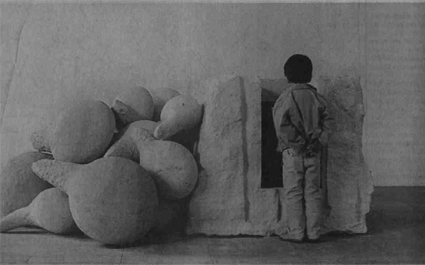Andrew Graham-Dixon reviews Cy Twombly's graffiti art at the Whitechapel, and Vessel at the Serpentine
CY TWOMBLY arrives at the Whitechapel with glowing references. For gallery direc¬tor Nicholas Serota, Twombly's art represents "a conversa-tion with the highest achievements of the Renaissance in both arts and literature", worthy of comparison with the late, glowing canvases of Turner. Ten years ago Roland Barthes paid tribute to Twombly in a different vein, deciding that his pictures "recover the spirit of purest Zen".
At first sight, the assembled paint-ings have some difficulty living up to such eulogy. The earliest works in this retrospective, from the mid-1950s, are daubed in paint the colour and texture of mouldering cream cheese, on which the artist has incised his characteristic scrawls and squigglcs of pencil. Wading through this thick pictorial under¬growth, the thought occurs that you might merely be witnessing the last gasps of Surrealism.
Raising dyslexia to the level of fine art, Twombly's paintings-cum-drawings seem to pay inflated homage to the type of "automatic drawing" once touted by the Surrealists as a shortcut to the subconscious. Twombly's mys¬terious cursive brambles seem, too, /nore than coincidentally similar to the great gestural paintings of Jackson Pol¬lock — which posed an inevitable chal¬lenge to American artists of Twombly's generation, embarking on their careers in the 1950s aftermath of the New York School's heroic era.
But Twombly is a lot more than the sum of his influences. His spidery doodles meander diffidently across large areas of space, a far cry from the macho declarations of Abstract Ex-pressionism. Panorama, his early mas-terpiece, reads like a tonguc-in-chcck tribute to Pollock. On a black ground, a fine web of white scrawls expands directionlessly, crackling with sup-pressed electricity. Twombly takes Pollock's familiar high-energy web of gestures and puts it under the micro-scope — he is...


